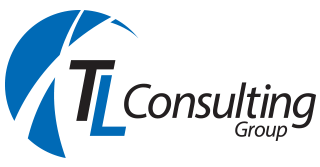Test Automation Services
NSW GovernmentCase Study – NSW Government
Background:
TL Consulting were engaged to define and develop test automation assets across several tier-1 critical emergency applications which included both Desktop GUI and Mobile devices that were used by the client’s workforce. The client had little to no test automation usage or capability and most of the functional testing performed was manual and time inefficient. TL Consulting were able to bridge the gap by understanding the test automation requirements and candidates to then build a comprehensive automation roadmap & strategy with a recommendation on toolsets & frameworks. This was aligned to the client’s standards and DevOps best practices and principles to enable CI/CD across their Cloud and on-Premises platforms. End user computing test automation patching was also supported during this engagement which helped uplift the client’s QA capabilities across their end user test assets.
Problem Statements:
There was little to no test automation overall being used and majority of the testing was manual and time inefficient (As an example, one of the tier-1 applications took ~ 2 days to complete all manual test scenarios in the regression test suite).
A range of applications required test automation and various frameworks were considered. This ranged from web- based applications, desktop applications and Mobile (iOS and android) needed to be supported
Outside of application test automation there was also a requirement to automate the testing of monthly patching that was execute across the end user computing environment i.e., Java upgrades, browser upgrades, Security patching before they were pushed out to the end users
No standardized processes and best practices were defined across the QA automation landscape
Client outcomes:
Defined and implemented a test automation roadmap & strategy to support the organisation’s tactical and strategic objectives
Identified and recommended the best fit toolsets & frameworks to support the client’s technology stacks (Web-based and Mobile) to ensure suitability across on-premises & Cloud environments (i.e., Cloud agnostic)
Improved test accuracy by increasing new automation coverage across tier-1 applications to reduce manual test effort and support rapid feedback to developers
Supported the internal QA team with the skills and capabilities to re-use automation scripts across multiple test scenarios including regression and PVT activities
Automated patching activities which could be run anytime and saved manual regression effort

Activities:
Carried out multiple test automation assessments across multiple technical stacks ranging from angular, .NET, SQL Server, MongoDB, Spatial GIS, iOS and Android to deliver an automation roadmap plan and multiple test environments which was Cloud-agnostic (AWS – SaaS/PaaS cloud models) and GovDC (On Premise). Data Driven & Hybrid framework types were chosen to support continuous testing Automated test reporting (via Allure & Cypress API modules) to provide fast feedback & insights to management teams and auditing into the applications and platforms stability (per release)
Created test pipeline(s) linked to the development pipeline and when a deployment was made it triggered the test pipeline that executed the automated regression pack which was used across other functional test activities including PVT CI tools such as TeamCity, GitHub Actions were incorporated for pipeline management Framework types used were:
CI tools such as TeamCity, GitHub Actions were incorporated for pipeline management
Framework types used were:
Cypress & playwright using JavaScript typescript (Web based applications)
Karate (API and Desktop applications)
Appium using python
Created several specific end user automation frameworks to support various types of application from an end-user perspective when patching was done. 2 frameworks were created
Cypress framework from browser-based validation
Karate for Desktop application validation
Created automation standards & best practices and rolled out to the organization. This allowed adherence to quality automation processes and standardized for Vendors to follow across project delivery.
This allowed better delivery and easier operationalization into BAU
After analysing the best-fit test automation frameworks and building in new automation test scripts, we were able to reduce the manual regression time down to under 45 minutes. These scripts can be re-used for future releases & regression suites and across several environments
Measurable Benefits:
Faster feedback cycle within 1 hour to let developers and testers know of any issues within a short timeframe
Accuracy and efficiency. Regression suite execution took 45 minutes to execute (~100 test cases) as opposed to 2-day manual testing effort
Operationalised the test automation framework for the client’s QA team with the knowledge & capability to run automation scripts independently
Faster build-test-deploy cycles by implementing CI tools such as TeamCity to automate the test pipeline and promoted continuous testing. This allowed 3-4 build deployments per day.
Promoted daily runs of the automation suite to reduce the impact of maintenance overhead
Reduced time from 2 people manually testing over a period of 0.5 days a day to 30 minutes
Using same automation pack allowed different SOE builds to be tested, allowing seamless deployment of patches to the end user devices
Uplift your Quality Engineering capability today
Contact Us
TALK TO AN EXPERT
PAGES
OUR DETAILS
SYDNEY
Level 14, 345 George Street
Sydney NSW 2000
© 2024 TL Consulting Group. All rights reserved.
